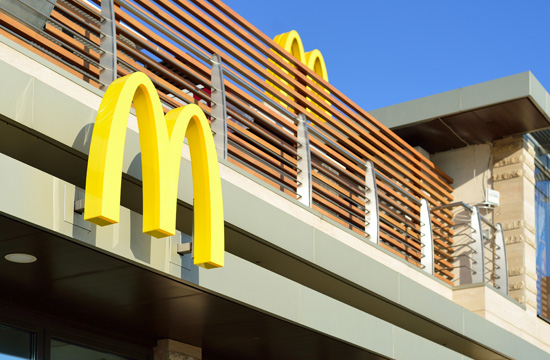Was the Reason for McDonald’s Success Because They Created a Better Hamburger or Because They Created a Better System for Their Business?

The fast food industry today has grown from over $6 billion in sales in 1970 to over $100 billion today in the United States. It employs over 4 million workers. And, 25 percent of the American population eats fast food on a daily basis.
While Burger King may proclaim to be the King, we all know that Ronald McDonald is no clown when it comes to wearing the crown as to who really is the king of fast food—every second of the day McDonald’s sells 17 Big Mac’s and 7 Happy Meals, and too many French fries to count!
McDonald’s has over 34,000 outlets in 126 countries. So much has McDonald’s changed the way we eat, it also has had a global impact. The Economist newspaper has created the “Big Mac Index”—the comparison of a Big Mac’s cost in various currencies as an informal judge of the parity of the purchasing power of the world currencies! Moreover, according to Fast Food Nation by Eric Schlosser, nearly one in eight workers in the U.S. have at some time been employed by McDonald’s.
So why did McDonald’s become so successful? Did McDonald’s create a better hamburger?
No, McDonald’s innovation was creating a better business system—better methods, systems and controls—than existed at the time in the food industry so that it could lower its costs and sell its products cheaper to the public, which allowed it to grow and be more profitable.
In fact, between 1953 and 1962, McDonald’s promoted its “system” with a logo featuring a character with a hamburger for a head and called him “Speedee”. The logo featured the name “McDonalds’s” with the character holding a sign which said, “I’m ‘Speedee’”. What we call today, “fast food”, came out of what McDonald’s called its “Speedee” system. McDonald’s “Speedee” logo advertised their new system right on the main outdoor McDonald’s marquee with the phrase—“Speedee Service System”. This phrase continued to be displayed on its main sign with the golden arches even after McDonalds surpassed 100 million hamburgers sold.
This was the beginning of the fast-food industry as we know it.
Richard and James McDonald were the brothers who founded McDonald’s in San Bernadino, California in 1940. It was the shake machine salesman Ray Kroc who bought the rights to their “system” to create the modern day McDonald’s corporation. But it all started with a couple of brothers in a family run business!
McDonald’s success was found in what we call the “business of the business.” In fact, the basis of any modern franchise is the “system.” When you buy into a franchise, you are buying into a business system.
While we all relate to the McDonald’s brand, what most people don’t realize is that what made the brand so successful was the “system” which allowed McDonald’s to become more efficient, more productive, and more profitable, and, therefore, allowed it to lower its costs, which made it more competitive, which made it more successful!
To the average consumer, he sees the brand. The franchisor, however, sees a system. Most business owners are just like the average consumer believing—wrongly—that McDonald’s success is about “brand.” The foundation to McDonald’s success has been its system which has allowed it to grow and mature where today McDonald’s has diversified into premium salads and yogurt parfaits for more health conscious consumers, as well as premium coffees to compete with Starbucks. But it all started with a better business system as its foundation!
And, that is what business owners often fail to recognize when thinking about being a success business owner. A professional business analysis identifies for business owners where they are deficient in cash management, controlling their costs, having a dashboard with all the information needed to manage their business, and having productivity-based excess profit incentives for their employees. Once these deficiencies are identified, a highly trained business consultant can be brought in to rebuild the foundation of the business with the proper methods, systems, controls and incentives to make the business better with state of the art systems so the company can be more efficient, productive and profitable to reach its goals for both the business and the family.
McDonald’s, more than any other fast-food franchise, changed the way we eat, changed the way we spend our food dollars, and revolutionized the restaurant business—not because they figured out how to make a better hamburger, but because they created a better business system!





